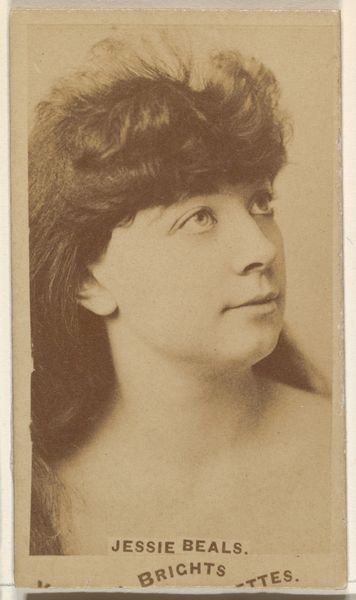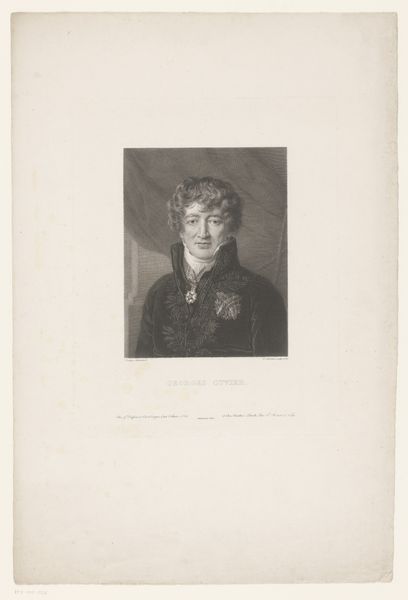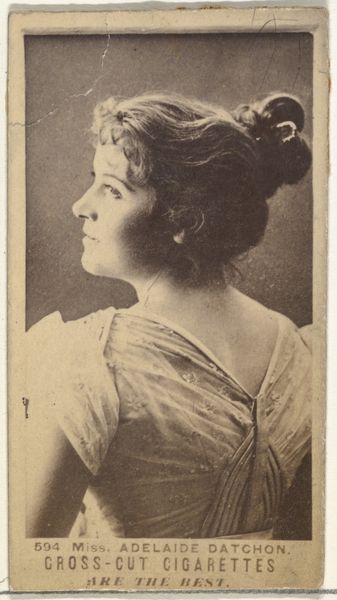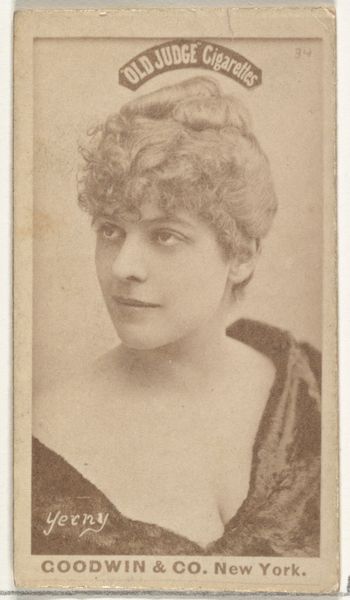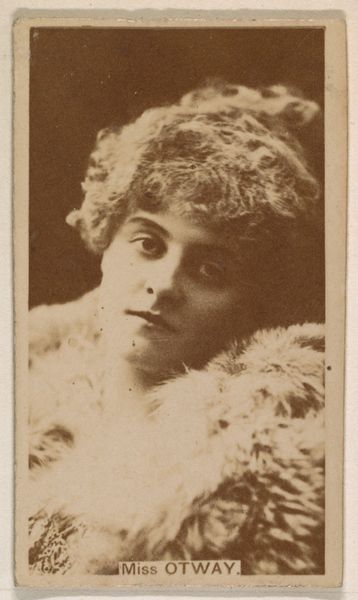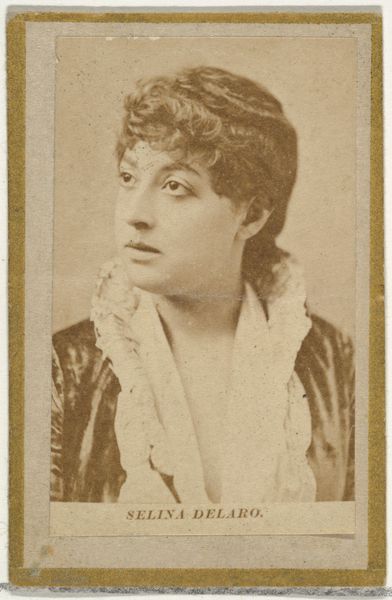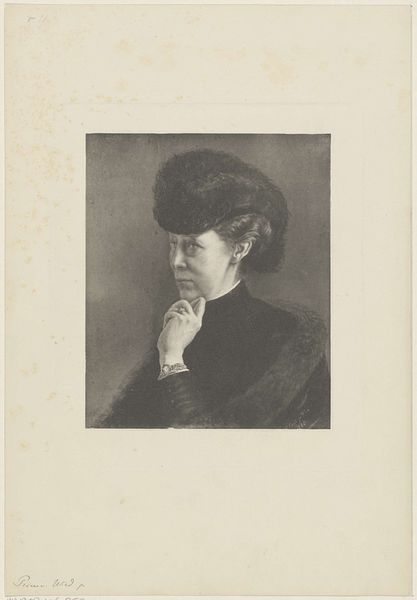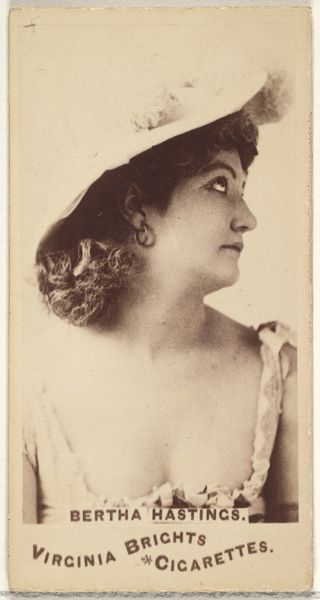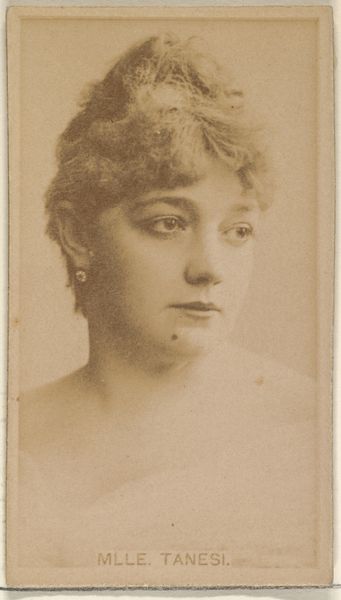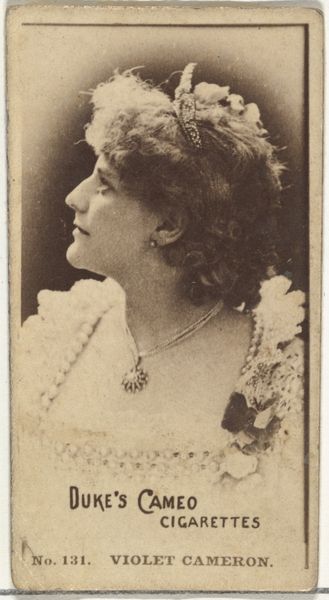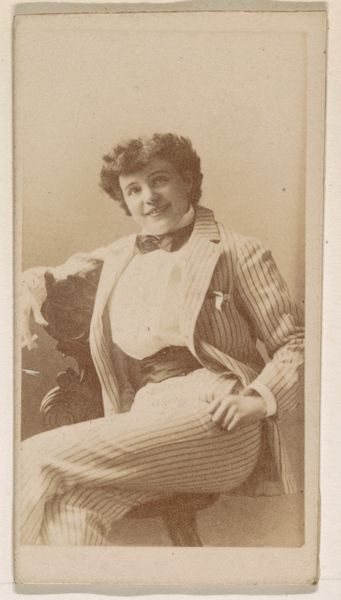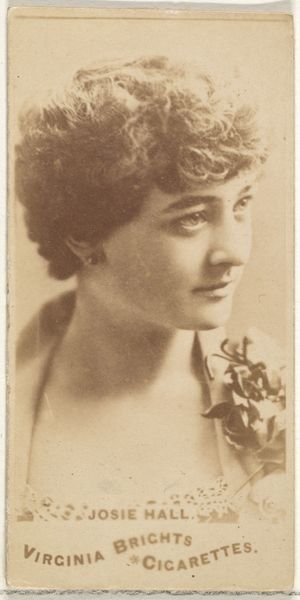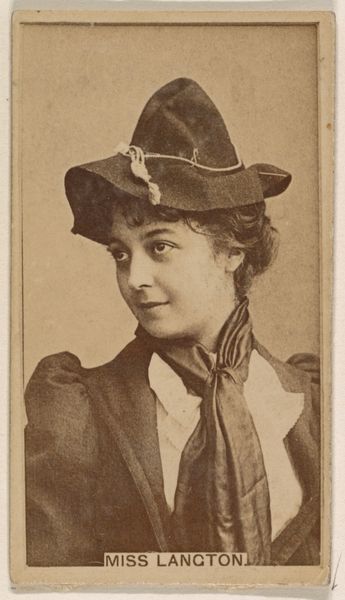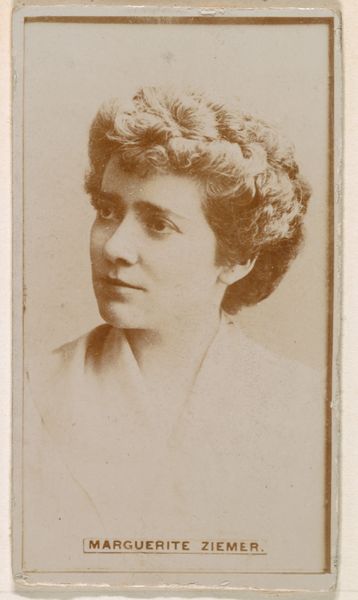
Dimensions: image: 23 × 19.2 cm (9 1/16 × 7 9/16 in.) sheet: 25.2 × 20.3 cm (9 15/16 × 8 in.) mount: 56.2 × 45.6 cm (22 1/8 × 17 15/16 in.)
Copyright: National Gallery of Art: CC0 1.0
Curator: Let's discuss Alfred Stieglitz's gelatin-silver print, "Katharine Dudley," taken in 1922. A compelling example of early 20th-century portraiture. Editor: Immediately, I’m struck by the sitter's intense gaze and the rather somber mood it evokes. There’s a tension in the stark contrast of light and shadow across her face and neck. Curator: The photograph displays Stieglitz’s signature Pictorialist style, where the focus is less on sharp detail and more on capturing a mood, a psychological portrait. The sitter’s elegant beads contrast nicely with the stark lines in the background. Editor: The background intrigues me as well, since the presence of a collaged sheet, apparently of poetic writing and musical scores, behind Dudley’s head certainly adds symbolic weight to the piece. It hints at the intellectual and artistic circles she occupied. It’s also visually dynamic; creating spatial tension within the frame, setting up visual dialogue with her beaded necklaces and dress. This element speaks volumes about Dudley's identity beyond a simple portrait. Curator: A formal element, but not without potential significance. Consider how Stieglitz used cropping and focus to direct our attention, framing Dudley within these modernist pictorial conventions to convey both character and social role, within an aesthetic structure. Editor: Indeed, considering its historical moment, just after women won the right to vote, the photograph, in a sense, encapsulates a crucial transition in how women were represented, moving away from idealized tropes. The starkness reflects, too, the new roles and identities women were carving out for themselves in the early 20th century, both within domestic spaces but also beyond. Curator: The texture too! Look how Stieglitz coaxes so much tone out of gelatin and silver, it emphasizes her individual details—especially her eyes—through precise manipulation of light and dark tones, while situating her face within a greater geometrical relationship with the picture as a whole. It speaks of someone in the moment, and for history. Editor: Overall, I see a poignant reflection on womanhood during a pivotal moment in history. Curator: I agree, her strong, independent expression, framed by modernist lines, is quite impactful.
Comments
No comments
Be the first to comment and join the conversation on the ultimate creative platform.

